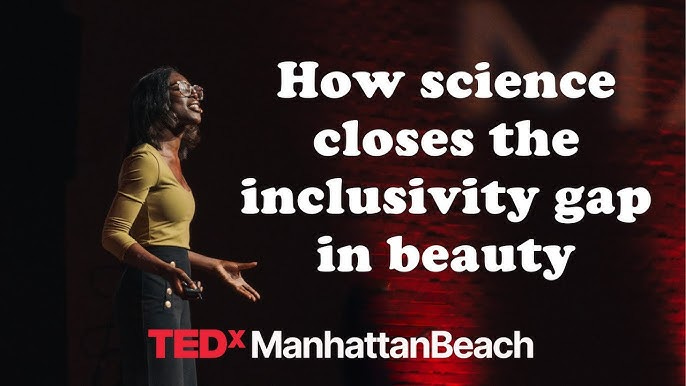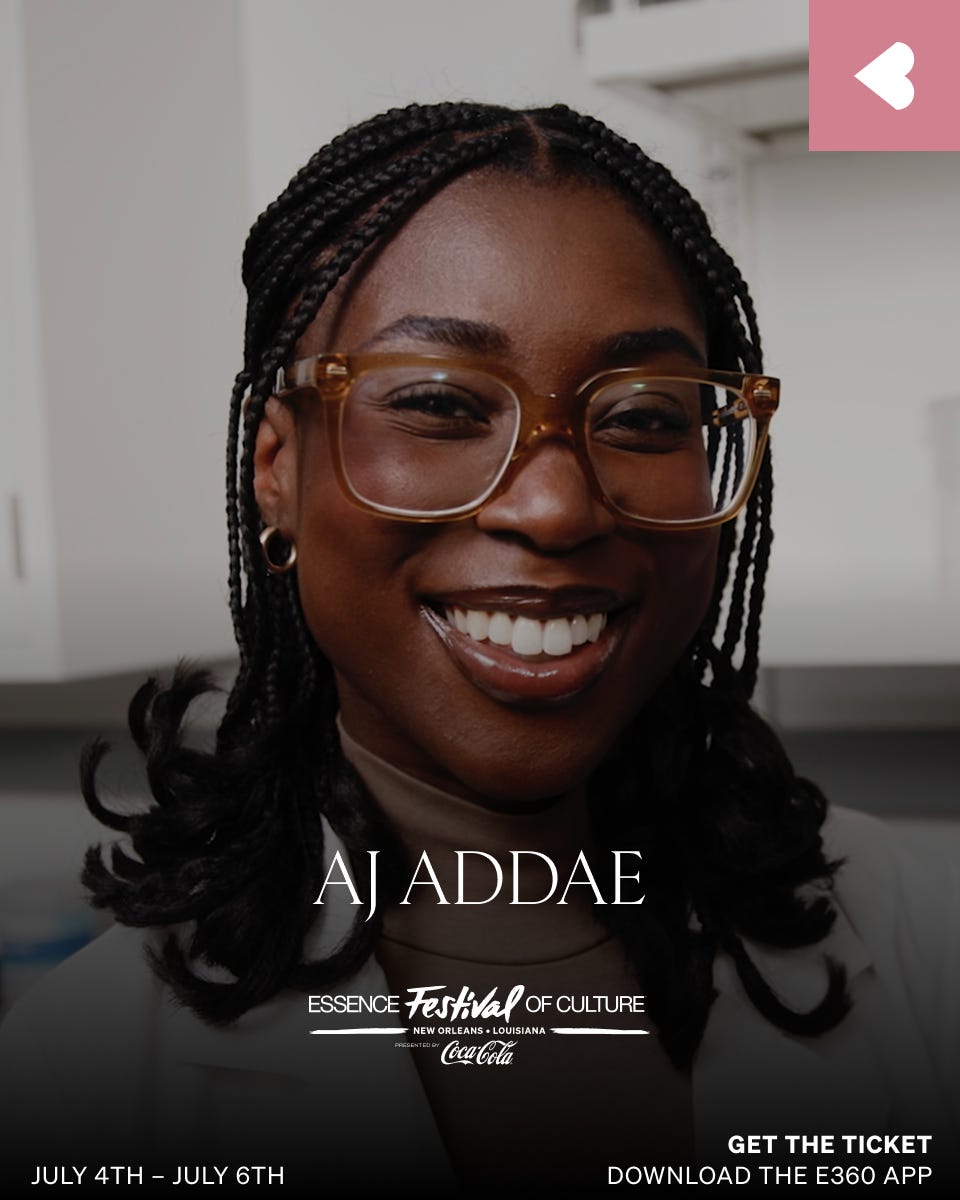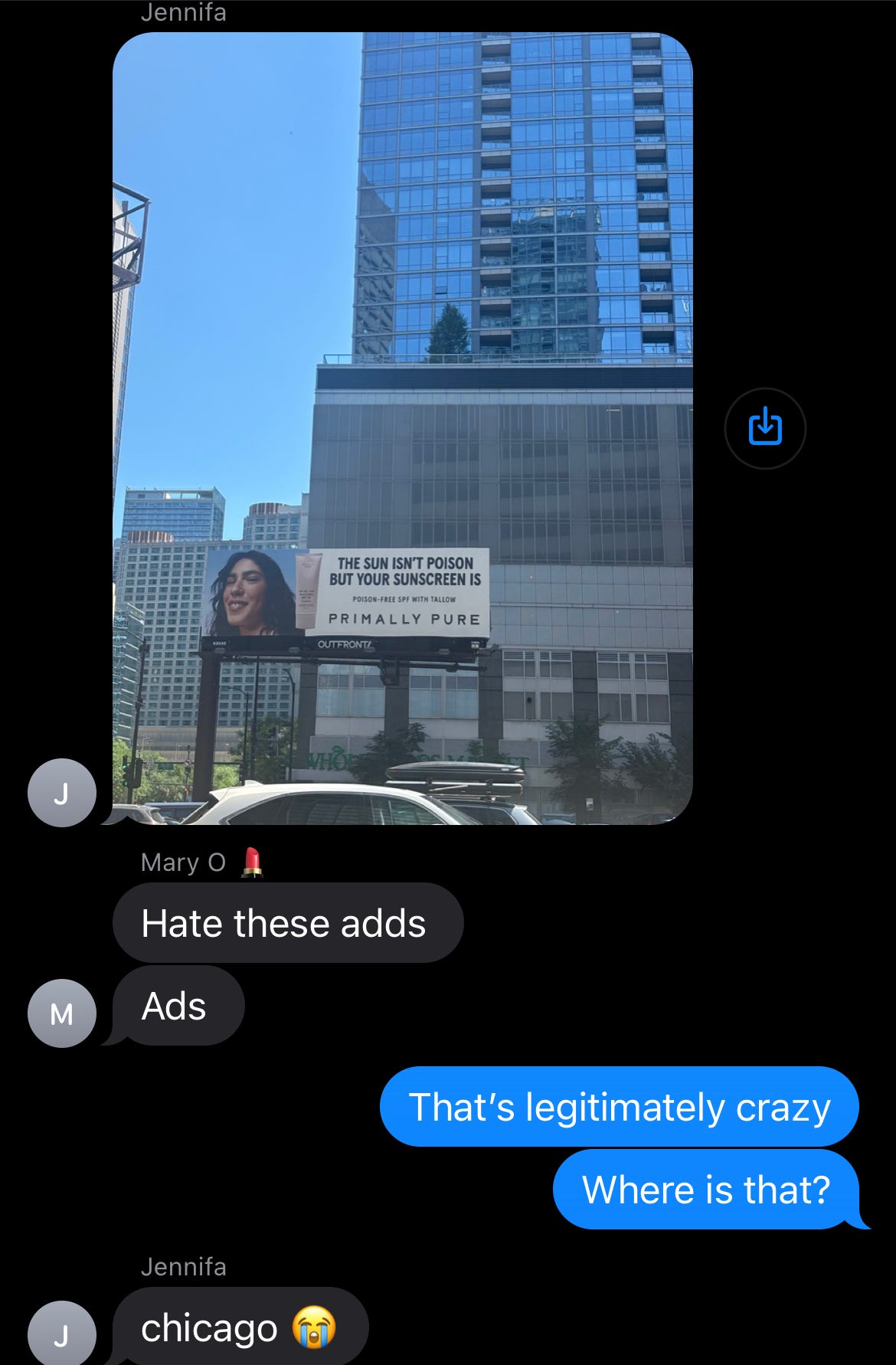Abstract - A letter from the founder, AJ Addae
In today’s issue, we’re offering a sunscreen-chemist perspective on the sunscreen headlines which have taken the industry by storm this month. Not sure if my perspective will shock you, but I certainly had to get it off my chest.
But before we get into it, here are some exciting developments from the lab:
SULA LABS has been selected as a Pharrell’s Black Ambition Prize Semifinalist (yes, that Pharrell!). It’s crazy to even type out, but we’re super excited to even make it this far. We’re in pretty good company with other technology companies, which you can view here.
This one is also crazy to say, but you can now view my (AJ Addae’s) TEDx Talk, which has been released this month as a TED global editor’s pick! Again, crazy to type out, and you can view the full talk here, which draws on a few themes that are currently very timely (sunscreens, white cast, inclusivity in beauty). It also answers my seemingly #1 FAQ - “How did you start SULA LABS?”
We’ll be at Essence Fest this weekend, where I’ll will be speaking on the Beautycon stage about beauty inclusivity on Sunday, alongside some other amazing panelists. Y’all know the deal.
And since I’m so eager to finally get into it, let’s finally get into the most important thing - the sunscreen drama.
WTF is going on with sunscreens?
June was a long month for the sunscreen community.
It’s almost as if everywhere I looked, there was a new sunscreen headline. In fact, we had an influx of journalists reach out for insights and commentary on the various topics circling, which resulted in many articles, including:
This Refinery29 sunscreen called “Why Can’t Sunscreen Brands Be Honest About White Casts?”, by Jacqueline Kilikita
This Business of Fashion article called “Why Sunscreen Launches Keep Missing the Inclusivity Mark”, by Daniela Morosini
If you’re out of the loop on why sunscreens are at the forefront of beauty convos right now, I’ll catch you up in a few bullet points.
It honestly makes me cringe to even platform this at all, but Primally Pure has posted billboards all over the country, proclaiming that its new sunscreen Sun Cream SPF 30 is “100% poison-free” and that, “The sun isn’t poison, but your sunscreen is.” As you can predict, this has sparked a lot of irritation in the beauty industry (and in my group chat, pictured below):
Tower28 launched a mineral sunscreen product that claimed to have “no white cast”, and many Black or melanin-rich consumers and creators were highly displeased with this claim. (Cue the application sunscreen video & the white cast on Julian Sass).
And the one that takes the cake - consumer group CHOICE tested twenty popular SPF 50+ sunscreens on the market, and saw that 16 out of the 20 that were tested, didn’t reach their SPF claims.
Now if you don’t know, I’m a chemistry PhD candidate who studies sunscreen in pretty excruciating detail (I synthesize zinc oxides in the lab, and do experiments to study their photophysical properties in my formulated sunscreen emulsions). I also write peer reviewed publications on my findings, and have a background in sunscreen formulation over many years - so I spend a lot of time around mineral sunscreens. And of course, you’re likely here because you know that my lab, SULA LABS, has a deep research core in inclusivity in beauty.
So with that said, I would like to say, if I may, that none of the above surprises me. Below, let’s break this all down together shall we?
Tower28
I want to start by saying that I don’t think that Tower28 meant to make the mistake that they did.
The truth is, as a high-powered beauty brand, it’s insanely easy to make this mistake. If you don’t know about the sunscreen launch pipeline, it typically goes like this:
Brand decides they want to launch a sunscreen due to something missing in their portfolio or on the market, and groups themselves into whether they want to create a “mineral sunscreen” or a “chemical sunscreen”.
Brand receives a brief and develops a sunscreen with a beauty manufacturer, who does much of the work when it comes to formulating around consumer standards, stability testing, and prelim SPF testing. Together, the brand and the manufacturer adjust and test until the product is where the brand deems to be sufficient and marketable. This step is pretty expensive.
After a couple of further compatibility tests, regulatory work, and possible registrations, the brand wraps up the project in a shiny bow and a nice story, then launches the product.
What I find difficult about this process is that the product’s story tends to be tightly hinged to whether the product is meant to be “mineral” or “chemical”. Interestingly, when brands come to chemists with a brief, they’ve already decided on this. But imagine you receive a brief for a mineral sunscreen which is meant to be SPF 60+ with no white cast, and is clear in color (instead of white). The problem is that this brief would work really well for a “chemical” sunscreen because “chemical” UV filters are typically clear in color (versus zinc oxide for example which is a white pigment), and an SPF of 60+ is not achievable yet in 2025 without a white cast to some degree. I don’t know anything about the origin story of the product, but it’s clear (no pun intended) that Tower28’s product would have really delivered on their claims if they were to simply launch a “chemical” sunscreen. And what’s best of all is that I - as a dark skinned woman - would have been able to enjoy it without the white cast I’m so incredibly used to.
Moreover, this is quite literally why SULA LABS exists. Unlike clinical testing, there is no regulatory mandate to do consumer perception testing on sunscreen formulations. That’s fine. However, if a brand plans to launch a mineral sunscreen and make claims around the user experience, let this be our resounding reminder that inclusivity-centered consumer perception testing is vital. Had there been a testing panel of people with my skin tone, who applied the product at the necessary amount for the SPF claim, this should have been picked up and noted before the product was launched.
CHOICE and Ultraviolette’s Sunscreen
First, let's cover what a sunscreen really is, in its essence. It’s a lotion that sits on top of your skin, and contains UV-absorbing chemicals (yes, chemicals) that absorb sunlight so that your skin doesn’t. As we know, lotions are not bulletproof - they evaporate, they pill, they get sweat off, and they don’t last forever. That is why I always say that sunscreens are ultimately just one aspect of sun protection in addition to hats, scarves, and umbrellas.
Moreover, if you’ve spent some time testing sunscreens, you’ll know that exact SPF values are not particularly reproducible due to a couple of reasons. The first is the fact that sunscreens are usually not being applied at the amount that they need to be in order to corroborate its advertised SPF value (and this application tends to suffer a little bit more with mineral sunscreens). The second is that SPF has a lot to do with how easily you sunburn or turn red (which by the way - I don’t turn red and have never experienced sunburn) after a specific amount of sunscreen is spread on a very specifically-sized surface area. SPF stands for Sun Protection Factor, and the tests that the FDA and ISO mandate for obtaining SPF values, are not the most reproducible.
For example, imagine you’re painting a wall. You use the same can of paint, the same brush, and you try to apply it evenly across several walls in a house. But each wall has subtle differences: maybe one is slightly rougher, another is more porous, another has a bit of old paint on it. Like sunscreen, even though you’re using the exact same paint and technique, the color or coverage can end up looking slightly different on each wall.
The same is true for SPF testing - different humans have different propensities for sunburn and “adequate” sunscreen coverage against sunburn, which is a highly important metric in determining a products’ SPF (see graphic below).
Our graphic on how SPF Testing is Done:
Now back to the paint analogy: Imagine that the walls you’re painting over in your house, are not all white. Some walls are green, and others are yellow. If you apply red paint to a green wall, and red paint to a yellow wall, the resulting wall colors will not be the same, even if you use the same exact paint and painting method. Now, imagine that time passes (let’s say, a year). You’ll expect chips in the paint, some dust settling, some marks, and perhaps a change of color, right?
The same happens to sunscreen formulations - zinc oxide and titanium dioxide particles can separate out of nicely made sunscreens overtime, and “chemical” filters don’t love prolonged exposure to heat and light over long periods. Furthermore, what may be SPF 30 protection for me (a darker person) may only be SPF 10 for someone with lighter skin.
Given this and the already existing literature on sunscreens’ SPF value varying overtime, it doesn’t necessarily surprise me that an SPF value can change from test to test.
Does it mean that brands are lying about their SPF value claims? Obviously not. Brands can’t even manufacture a sunscreen without their manufacturer having this documentation from testing labs. But as I always say, the real culprit I come back to, is that the testing methods we have available for SPF testing, are not the most reproducible for SPF value in all conditions and on all people, over time.
Primally Pure
Again, it deeply pains me to platform this, but I had to mention it last, because it drives my whole point home. There’s a lot of misinformation out there on sunscreens and I can’t tell you how many of them that I see on a daily basis, simply off of how sunscreens are advertised. For example - why are “chemical” and “mineral” universally acceptable category names (misnomers) for sunscreens when minerals are also, in fact, chemicals? Why is there a perpetuated myth that mineral sunscreens “reflect” and “chemical sunscreens absorb” light when an incredible amount of scientific literature proves - through very clear experimental data time and time again - that both “mineral” and “chemical” sunscreens both work by absorbing UV light?
These are the same “grandfather myths” (credit to Jen from The Eco Well) that allow brands to lead their sunscreens’ marketing messages off of what “type” of sunscreen it is, when the average consumer is likely already misinformed on sunscreens. As we know, beauty is a highly marketing-led industry, and commercial value propositions have historically led the way over insurmountably true scientific facts. However, I wanted to note that I can see this changing in the product landscape, and consumers are learning more and more about SPF.
But it’s almost as if one unit of sunscreen misinformation forward, brings us back 10 units in reproducible, accurate sunscreen information.
So now what?
Sunscreens are consumer products, but in many countries (including the USA), they are regulated as drugs, and they actually are very scientifically complex materials. They are not perfect - at least not yet. And I, and other sunscreen scientists spend a lot of time working to improve on the current materials we do have, because let’s be real - the USA is not approving any beautifully elegant UV filters any time soon. However, as my PhD advisor once said, “You’re never as far ahead of the field as you think you are.” I return to this quote when I see products touting that they’ve cracked the code with SPF launches, on problems that are deeply rooted in scientific problems which have yet to be unraveled. I return to this quote from time to time when I read my own experimental data.
I might be biased, but I think the truth is that those who truly can move the needle on these problems, are in the lab, or those who are policymakers. And it’s not like people aren’t in the lab (I say as I literally write this in the lab). It’s that we’re trying to push the limits on what is natural, and create something better. I also think that beauty brands with sunscreen products are admirably brave when they take on these challenges to launch sunscreens that form films for long enough to provide long-term SPF value, or sunscreens that are “mineral” and blend better into darker skin tones, or anything of the sort. While the brand founders are usually not the ones doing the science on the sunscreen, I think that they should continue to do iterate on the state of the art of what is considered a “good” sunscreen because it’s good proof that these problems deserve solutions at some point.
But like I always say, we’re not there yet. And as you can see from June’s headlines, we have a far way to go. So if you’re a brand that’s struggling with some of this for an upcoming launch - or just need a gut check - just drop me a line at aj@sula-labs.com, and we will be able to consult you or possibly help you along the way.
And lastly, for our paid subscribers, we’re offering a free download/access to our info deck regarding suncare claims and inclusivity, which you can find:







